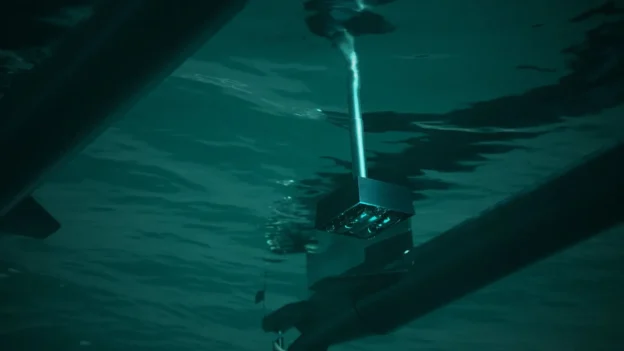Naval autonomy firm ACUA Ocean has secured a strategic contract with the European Space Agency (ESA), backed by the UK Space Agency, to accelerate the development of its nested robotics system launched from the USV PIONEER.
This project enables PIONEER-class unmanned surface vehicles to perform launch and recovery of ROV underwater drones. ROV underwater drones, thus expanding their use in sectors such as wind energy, offshore, submarine cable monitoring and ocean scientific missions.
Satellite communication and offshore inspection
One of the core elements of the solution is the incorporation of space technologies such as GNSS and satellite communications, which allow remote control of the ROVs even beyond line of sight (BVLOS). In addition, network fusion technology allows utilizing the combined bandwidth of multiple communication links, ensuring continuous operation even with partial degradation.
This connectivity enhances the system’s ability to transmit real-time data, accurately position vehicles, and maintain command link in hostile environments, such as those encountered on offshore platforms or in scientific research areas.
Leadership in autonomy and regulatory validation
ACUA Ocean has strengthened its position as a reference in unmanned marine systems thanks to the recent certification of the USV PIONEER under the UK Working Craft Code. This approval, the first of its kind worldwide, paves the way for the commercial implementation of its technology.
The institutional backing underlines the importance of market-driven innovation, one of the pillars of the UK Space Industrial Plan, which seeks to foster cross-sectoral applications of space capabilities.
Energy, defense and science applications
Thanks to this robotic solution, a substantial improvement is expected in offshore wind turbine offshore wind turbine inspections The system represents a flexible platform for complex missions in extreme conditions, with minimal environmental impact and reduced operating costs. The system represents a flexible platform for complex missions in extreme conditions, with minimal environmental impact and reduced operating costs.
This development represents a firm step towards a new generation of autonomous maritime operations, combining space and naval innovation to address the challenges of ocean monitoring in the 21st century.
Source and photo: Ocean Autonomy

